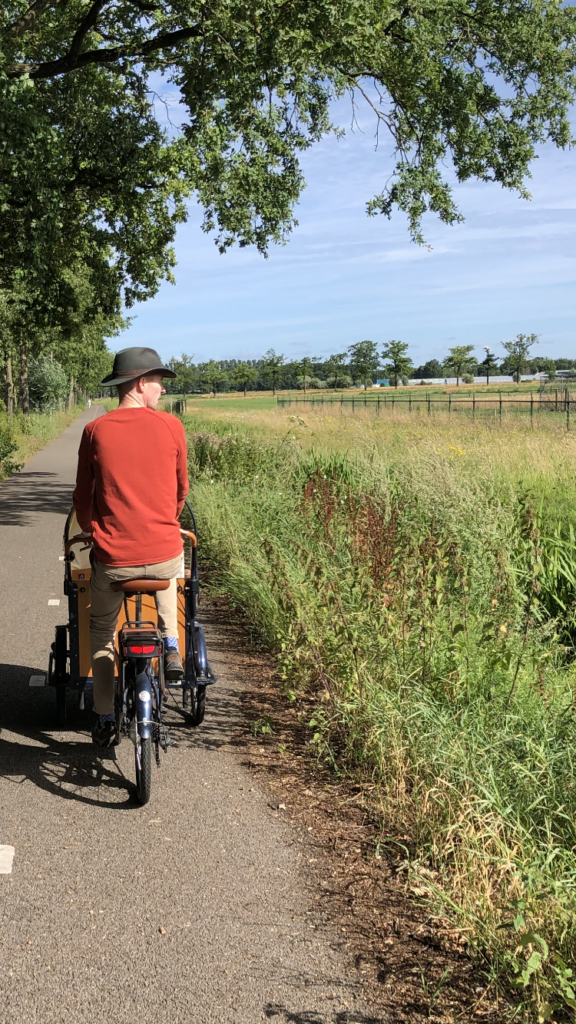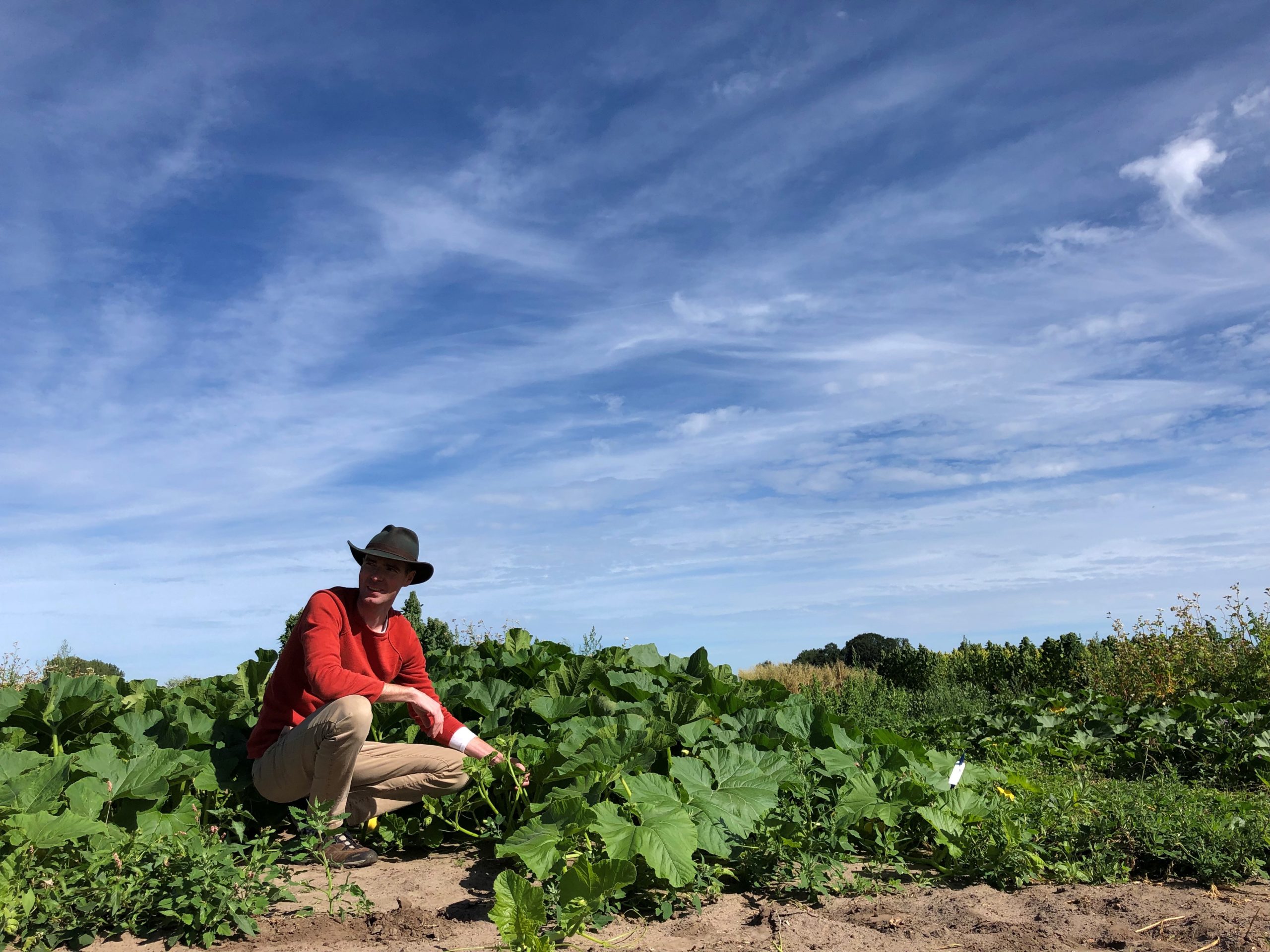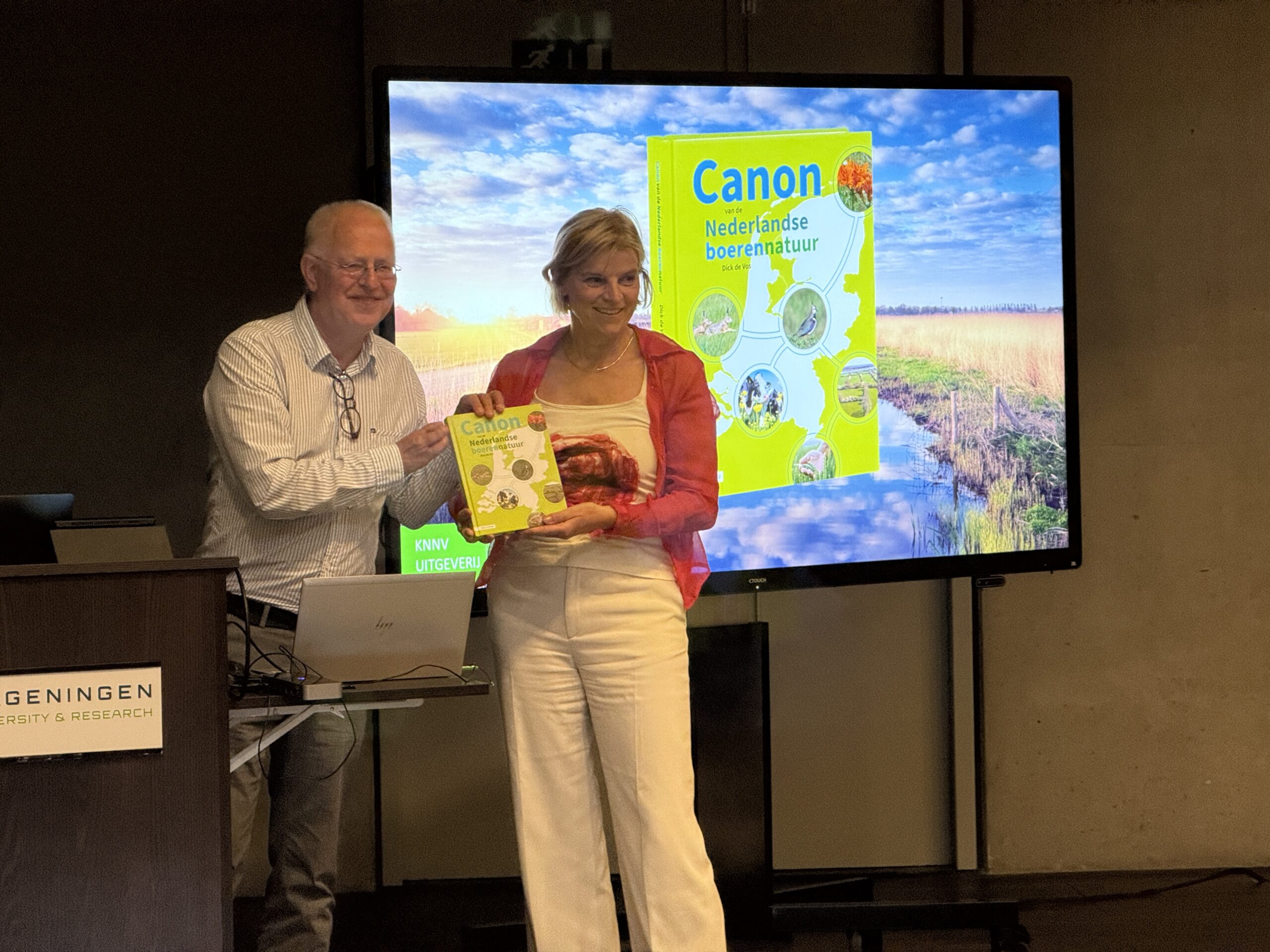Combining new knowledge with age-old methods: WUR researchers test what varieties and crops flourish in each other’s company and which don’t. ‘We want to see how many different combinations we can test without using too much space. This goes beyond strip-tilling and mixed tilling.’
Researcher Peter Bourke cycles across the empty campus towards Unifarm donning a cowboy hat. On the plot near Droevendaal, he works with Unifarm staff, students and other researchers on a study with strip-tilling and the pixel system. The project is one of the so-called ‘flagship projects’ within WUR’s “Biodiversity Positive Food Systems” investment theme.

Nine different crops currently grow on the one-hectare plot. Ranging from oats to buckwheat and from beets to quinoa, and divided over eight hundred small plots. Three varieties of each crop have been planted. ‘We aim to see how many combinations we can test without using too much space’, says Bourke while he walks among the emerging green. Bourke and his colleagues have divided the experimental field into strips and subdivided each strip into plots. ‘We have so much more knowledge than a century ago. And we aim to study what combinations thrive, and we also want to develop methods to breed varieties to make them more suitable for growing in combination with other crops.’
Nitrogen and drones
This testing method is not new, says Bourke. It is the rediscovery of old knowledge. ‘We have known that some crops thrive together for a long time. Consider, for example, South America: centuries of selection have shown that maise, beans and pumpkins thrive in each other’s company without artificial fertilisers and pesticides. Or broad beans. We have some here; these beans don’t need much nitrogen because they fix nitrogen themselves. This means they can be planted next to a crop that needs more nitrogen. This ecological knowledge can be applied in agriculture. If we want to reduce the use of pesticides, we must return to systems of the past.’
The over eight hundred small plots are harvested in stages; the endive now, buckwheat later
Researcher Peter Bourke
Drones are flown over the plots every three weeks. The video footage they yield enables the researchers to see what crops do well together and what crops don’t. The field is too large for the researchers to measure everything by hand. The over eight hundred small plots are harvested in stages; the endive now, buckwheat later. Bourke: ‘We can already see some interesting things already. Beets don’t thrive next to quinoa, for example. This could be due to the drought, but growers will not want to combine these crops.’
The study is conducted by a team of researchers from different groups, Bourke states. ‘We do this experiment with scientists from different groups. Piter Bijma of Animal Breeding and Genomics and I lead the investigation, and we have colleagues from Soil Biology, Crop Systems Analysis, Farming Systems Ecology, Plant Ecology & Nature Conservation, Field Crops, Biosystematics and Molecular Biology, among others. The project will continue until the end of 2024.’

 Researcher Peter Bourke in the Unifarm field where strip-tilling and the pixel system are being tested.
Researcher Peter Bourke in the Unifarm field where strip-tilling and the pixel system are being tested. 

![[Seriously?] Something fishy about BioBlitz](https://www.resource-online.nl/app/uploads/2025/05/WEB_DeNeusUK.png)